
Encourage your students to creatively explore character building through practicing the 8 Efforts of Laban!
- Subject:
- Dance
- Fine Arts
- Physical Education
- Theater
- Material Type:
- Activity/Lab
- Interactive
- Author:
- Lorin Mello
- Date Added:
- 07/27/2022

Encourage your students to creatively explore character building through practicing the 8 Efforts of Laban!
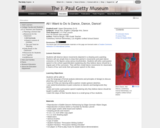
Students will observe dance movements depicted in a drawing and a painting. Partners will use simple lines to draw their partner's movements and paint dance costumes on the figures using various brushstrokes. Students will write a persuasive speech to the school superintendent explaining why they believe dance should be a regular part of the curriculum. They will then model dance movements for classmates in teams of four and recite their persuasive speech to the class.
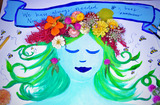
Learn about visual and performing artists. They often use their creativity to raise their voices and share lessons, stories, and important ideas with the world. In this episode of The Creative Corner, two artists from Richmond, Virginia help us explore how art sparks crucial conversations. Public artist Hamilton Glass shares how (and why) he gathered a group of artists to paint murals with a message all across the city after some challenging current events, and musician Victor Haskins talks about storytelling as human nature — and why sound and performance tell stories so well. Then you’re invited to share your own voice through a poster project!
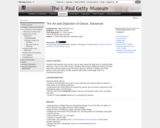
Students will examine three works of art to learn about the daily lives of working ballet dancers in Paris in the 19th century. Students will conduct additional research to learn about the cultural context at the time these dancers worked, including how ballet dancers were perceived. Finally, students will create a backstage view of a contemporary dancer.
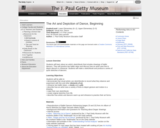
Students will learn about an artist's sketchbook that includes drawings of ballet dancers. They will practice two ballet steps and discuss how an artist uses line to depict dancers in rehearsal. Students will make a sketchbook and produce a series of quick sketches of dancers.
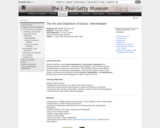
Students will learn about axial movements and locomotor movements by discussing dancers depicted in a drawing and photograph. They will then practice combining axial and locomotor movements. They will describe how artists depict a dancer's motion in drawing and photography. They will also analyze how an artist creates movement and emphasis through contrast, composition, and leading lines, and then experiment with photography to capture motion in dance.
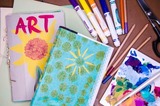
Learn about the artwork that is created and kept close to the artist’s heart, and other artwork is made to be shared! Dig into some DIY book-making, participate in a secret community art project, and learn how artists and musicians build unity through Afro-Caribbean dance styles on a trip to Dogtown Dance Theatre — all on this episode of The Creative Corner.The Creative Corner is a weekly TV show for elementary through high school students and adults. Each episode explores new topics through the lens of the visual and performing arts, with fun at-home activities that align with Virginia's Standards of Learning, and special interviews with guests from around the globe. Developed for 4th grade through adults.
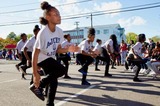
Get moving in The Creative Corner with a seriously silly drawing challenge, a visit with the Anna Julia Cooper Episcopal School step team, and a great big outdoor adventure art project. Learn to create blind-contour drawings and land art installations.
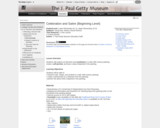
Students will analyze art elements and symbolism in a late-19th-century painting, create a self-portrait, and learn a dance depicted in the painting

After learning about the elements of dance, various dance styles, dance technique, or a dance step, students plan and create their own dance video tutorial.
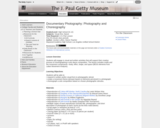
Students will engage in visual and written activities that will support their creative process of choreographing a solo dance composition. The lesson includes motifs and the movement components -- body, effort, shape, and space (BESS elements from Laban Movement Analysis).

This document contains a sample list of fine arts careers by discipline, links and resources for exploring fine arts careers, and resources for workbased learning in fine arts courses.
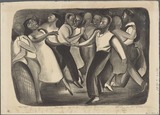
Students will be presented with foundation knowledge of the Harlem Renaissance, experience some sights and sounds of this movement, then gain deeper knowledge by creating a virtual “museum exhibit” of a famous artist or author to share with others. At the end of the lesson, students will evaluate the impact and significance of the Harlem Renaissance, and consider how the arts can serve as vehicles for social change.

A study of how the element of space is used in dance for fourth and fifth grade students. Students will explore how the dancer’s orientation and relationship to the space can be varied to create interest in choreography.

In this lesson unit, students will explore how dance can function as a courtship ritual to strengthen ties in a community. Students will observe, learn and practice dances from different time periods and examine how community and culture are reflected in the movements they learn.

Students will explore how styles of dance are influenced by culture. They will learn simple movement phrases from the Pavane, an English court dance, and Alingo Lingo, a Mexican Folk Dance.

The exercises in this plan are designed for students to exercise improvisation skills and creative thinking in dance movement. The exercises could be used as warm-up activities, or could lead to a larger choreographic project. This instructional plan is designed to be used in parts or whole.

Dancers will learn to choreograph dance using the chance method. The basic elements of dance will outline each step of the project, and dancers will roll dice to land on movement choices in each category to create their phrase.

This sample lesson is designed to enrich student exploration of existing class choreography. Students will explore each of Laban’s effort actions and understand how each action engages time, space, and weight. Students will practice a choreographed movement phrase, manipulating effort actions to perform in a qualitatively rich manner. This lesson offers students the opportunity to demonstrate creative agency within a predetermined structure (the original choreography).

This unit plan contains seven lessons taking students through activities related to elements of dance skills and vocabulary.